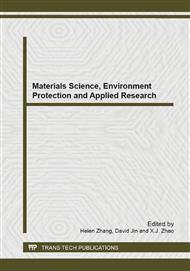p.85
p.89
p.93
p.98
p.103
p.107
p.111
p.115
p.119
A Constitutive Model of Rocks under Uniaxial Tension
Abstract:
A constitutive model is proposed to simulate the completely deformation process of rocks under uniaxial tension. Based on the revised elastic modulus method derived from the hypothesis of strain equivalence, we analyzed the relationship between the damage variable and the strain. It is found that the relation can be modeled using a sigmoid curve. This model can describe the complete deformation process of rocks under uniaxial tension satisfactorily. In particular, the nonlinearity near the peak in the pre-peak region is accurately captured by the proposed constitutive model. The rapid decrease of rock strength after peak load can also be captured satisfactorily. The used mathematical function is simple and the damage evolution process is clear. The validity of the model is verified using laboratory test data.
Info:
Periodical:
Pages:
103-106
Citation:
Online since:
March 2014
Authors:
Keywords:
Price:
Сopyright:
© 2014 Trans Tech Publications Ltd. All Rights Reserved
Share:
Citation:


